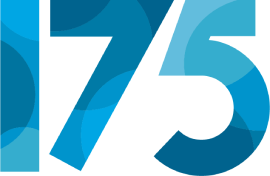
Celebrate 175 years of the Astronomical Journal
Latest News
Assigning DOIs to data published in the journals
Starting in 2025, we are further enhancing the digital data published in the AAS Journals by giving each contributed dataset or online-only figure a unique digital object identifier (DOI). Improving data publication in the journals For over twenty-five years, authors have provided digital data with their AAS journal publications.…
AAS Publication Support Fund Process Change
In response to feedback from authors, AAS journals will now adjudicate requests for publication support when a manuscript is submitted, rather than waiting until a manuscript is accepted as was done previously. Under the new processing workflow, the Editor in Chief will review requests within one week of the submission…
Editorial on New Authorship Contribution Section
In this editorial published in the Bulletin of the AAS, AAS Journals Editor in Chief Ethan Vishniac describes the role of the new Authorship Contribution Section in AAS journal articles.
AAS Journals Again Receive Strong Impact Factors
The American Astronomical Society’s peer-reviewed journals remain among the highest-ranked publications in the astronomical sciences according to several key metrics, including impact factor.
Author Resources
AAS Nova Research Highlights
Black Holes with a Shared Background
New research suggests that triplet stars might be able to evolve into every observable type of stellar-mass black hole system.
The post Black Holes with a Shared Background appeared first on AAS Nova.
Do X-Rays Help or Hurt Massive Black Hole Formation?
Astrobites reports on how X-rays influenced the formation of the first massive black holes in the universe.
The post Do X-Rays Help or Hurt Massive Black Hole Formation? appeared first on AAS Nova.
The Sun Left Home in a Hurry
By studying the orbits of rare outer solar system objects, astronomers have estimated how long it took for the Sun to leave its birth cluster.
The post The Sun Left Home in a Hurry appeared first on AAS Nova.
Do You Have This Andromeda Galaxy in Extra-Extra-Extra Small?
Astrobites reports on the discovery of the faintest galaxy in the Andromeda system, Pegasus VII.
The post Do You Have This Andromeda Galaxy in Extra-Extra-Extra Small? appeared first on AAS Nova.
AAS Journals Editorial Board
The AAS Editor in Chief, the ApJ Letters Editor, the PSJ Editor, and a team of seven Lead Editors and more than 30 Science Editors manage peer review of its flagship research journals.
AAS Publications Committee
The AAS Publications Committee works with the AAS Editor in Chief to oversee the policies, editorial personnel, and new initiatives of AAS publishing.




